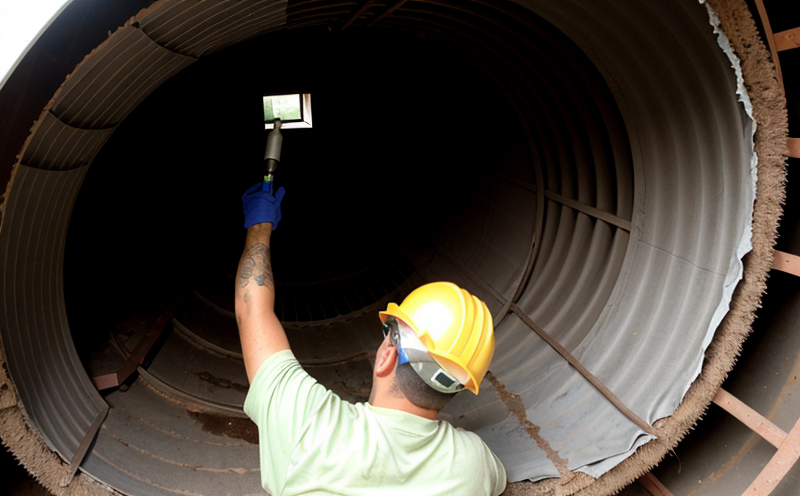Ventilation duct inspection
The integrity and efficiency of ventilation systems are critical to ensuring healthy indoor air quality in residential, commercial, and industrial settings. Ventilation duct inspection serves as a vital component in maintaining these systems by identifying potential issues such as leaks, blockages, or contamination that could compromise the overall performance.
During an inspection, specialized equipment is used to examine the interior surfaces of the ventilation ducts. This process helps in detecting any obstructions, corrosion, or other defects that might affect airflow and energy efficiency. The primary tools employed include thermal imaging cameras, fiberoptic scopes, and air velocity meters, among others.
The first step in a ventilation duct inspection involves preparing the system for examination by ensuring it is free of debris and contaminants. Once prepared, the inspector uses advanced technology to carefully map out every inch of the ductwork. This mapping process allows for precise identification of any areas requiring attention or repair. Following this detailed assessment, comprehensive reports are generated outlining all findings along with recommended actions.
Compliance with relevant standards like ASHRAE and ISO is essential during these inspections. These guidelines ensure that best practices are followed throughout the entire inspection process—from preparation to reporting results. By adhering strictly to such protocols, laboratories can provide clients with reliable information regarding their ventilation ducts' condition.
A well-executed ventilation duct inspection not only improves operational efficiency but also contributes significantly towards enhancing occupant health and comfort levels within buildings. Regular inspections play a crucial role in preventing costly repairs down the line while ensuring continued compliance with local regulations.
Quality and Reliability Assurance
- Data accuracy: Rigorous calibration procedures ensure that all measurements taken during inspections are precise and reliable.
- Consistent methodology: Adherence to standardized testing methods guarantees uniform results across multiple projects.
- Certified personnel: Only trained professionals perform these inspections, ensuring consistent quality standards.
The rigorous processes employed in ventilation duct inspections contribute significantly towards maintaining high levels of reliability and accuracy. By adhering strictly to industry best practices, laboratories can provide clients with confidence that their systems are operating optimally under all conditions.
Customer Impact and Satisfaction
Regular ventilation duct inspections offer numerous benefits for building owners and managers. Firstly, they help identify potential problems early on before they escalate into more serious issues requiring extensive repairs or replacements. Secondly, these inspections contribute to improved energy efficiency by ensuring optimal airflow throughout the structure.
Thirdly, maintaining proper ventilation helps reduce instances of indoor air pollution which can have adverse health effects for occupants. Lastly, compliance with regulatory requirements is ensured through regular testing and reporting. This way, customers not only benefit from healthier environments but also avoid costly penalties associated with non-compliance.
Use Cases and Application Examples
- New Construction: During new construction projects, ventilation duct inspections ensure that all components are installed correctly according to design specifications.
- Retrofitting: For older buildings undergoing retrofits or renovations, thorough inspections help identify areas needing improvement before work begins.
- Preventive Maintenance: Regular inspections form part of routine maintenance schedules to catch small issues early and extend the lifespan of ventilation systems.
These examples illustrate how important it is for organizations responsible for maintaining large-scale HVAC networks to invest in regular ventilation duct inspections. By doing so, they can ensure peak performance of their facilities while simultaneously promoting occupant health and safety.





